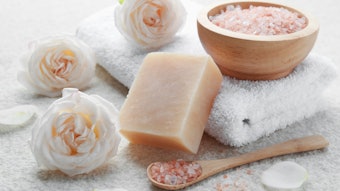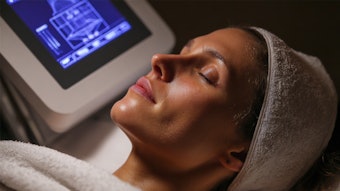
The changing attitude towards skin care and wellness isn’t just a shift in trends and culture surrounding health, but means a change in how we run our businesses. The age of massages being reserved for the wealthy or special occasions where someone wants to feel pampered for the first time in a year is gone.
“It [Massage] is not just a luxury on a cruise ship,” says Chad Reid, COO of The Inspire People, a group that owns eight Massage Heights locations across the San Antonio market. “This is something you should be doing in your daily life.” He specifically cites the pandemic as being a turning point for society at large, where we all started wondering about ways we can live a healthier life. While this shift has no doubt contributed to industry growth, which is up 25% since 2019, according to Bloomberg, it’s always been lucrative. “It’s an easy business to be in,” Reid exclaims. “Clients come in and lie on a table—it’s not like going to the gym.” That doesn’t mean that clients are completely off the hook, though. Reid mentions that home care is just as, if not more, crucial than what happens at the spa itself, which makes sense. Clients spend more time at home than at the spa.
To keep their results, they need to participate in behaviors that are conducive to keeping the rejuvenated glow that a well-planned massage and facial can give them. It’s consistency that breeds results. This is why client education is so crucial; when a massage therapist or esthetician coaches a client on how to take care of themselves during their appointment, and then a client can take those new skills home and reap the fruit of that education, clients will trust their therapist and come back. Word of mouth has always been a favorite within the industry, and a strong network can’t be overestimated—yours or your clients—when clients go out into the world, supported by the treatments you deliver and armed with the knowledge of a solid home care routine, they’ll gush about you and be gushed about by their friends, laying the foundation for more prospective clients to head your way so they can experience that glow for themselves.
Good results aren’t the be-all-end-all to a successful business, though. Reid encourages those in the wellness industry to treat customer service like welcoming a guest into their home. “There are three things you can compete with in business,” he says. “You can have the best product, the best price or you can have the best customer service.” Skin and spa aren’t industries where talent is scarce: a good massage and facial can come from almost anywhere, with standardized ranges of price points more or less set according to the size of the operation, which leaves customer service. Think back to how your clients feel when walking into your business versus how you want them to feel: are they hosted? What do you do to welcome them into the space? “Hospitality is key,” says Reid. When creating a place that feels open, and welcome and conducive to healing, taking your space and making it just a little bit theirs for the time they’re with you, can go a long way.
As we all know, though, running a successful business is made of lots of moving parts, and the clients are just one half of that picture. “Figure out how to meet your workers where they’re at. [I know] it’s going to cost me 2.5 times what a current employee costs to recruit and train a new one. There are only so many people in the industry you can burn through before you become the stigma in the industry, and you never want to be that.” Even a booming industry can make for a small world, and a reputation as a toxic boss or manager can precede you. For smaller practices scratching their heads about how to keep employees happy with their compensation without pricing themselves out of the industry, Reid recalls how Massage Heights incorporated a tiered membership structure. Similar to in salon spaces, members get guaranteed access to a tier one massage therapist, however, those looking for a super specialized experience, or to work with a second or third-tier therapist in particular high demand could pay extra for that, and that extra money goes to the therapist themselves, allowing therapists to work towards higher compensation without destabilizing prices. The rapport struck between a client and their therapist also goes a long way in feeding the demand for these curated levels of mastery, meaning that businesses shouldn’t have to worry about this tiered structure being lucrative.
Reid also encourages those thinking about starting their own business to keep in mind that revenue and the money you get to take home are two different things. Running a business costs money: equipment can break down, and employees, rent and other bills all need to be paid. A lot of newer entrepreneurs can forget that, and a standardized curriculum for business is lacking for beauty and wellness professionals, meaning not everyone knows what to expect. That’s why intentional practices with the growth and longevity are important—in that way, businesses and the people behind them aren’t so different.
To this end, client retention is crucial, but what about bringing new clients in? That section of the industry is facing a volatile landscape itself with the rise of AI and the prevalent social media personalities. Businesses have been left scrambling to learn this new specialized algorithmic lexicon, with varying results. “Social media is the best and worst you see in people,” Reid admits. It’s not a holy grail, though, and while a well-strategized social media campaign can hold a lot of sway, he says that a much larger factor Massage Heights saw in its marketing was the nuance required when tailoring promotional materials for specific locations. Influencers, while useful for partnerships, can’t replace a long-beloved, genuine personal connection, much of which is staked in the trust built through client education, and the recommendations that stem from that. People don’t just like to follow the advice of the successful, but of those who share the same values and priorities.
With a really solid rapport, the referrals returning clients give are gold, because they’re entrenched in earnestness, which isn’t something that can be bought or faked. Social media can be a terrific avenue for educating, but grassroots communication and relationship building will never go away completely, nor will a well-intentioned suggestion from a friend ever be out of date. So, if some of the old rules are still in play, what can spas do to stay relevant? Reid says knowing who you are is paramount. “Ask yourselves who you are and how you can be that person for your community?” The connections and experiences built on those efforts will keep the customers returning.
“I never would have told you 17 years ago that I’d be running spas and loving it,” says Reid. “I stumbled into the industry. The first massage I ever got, I got when I started working at Massage Heights…I learned right away that communication is something we should harp on,” he laughs. “But ultimately, we as a society are looking for ways to live healthier and longer. If I could give one piece of advice to anyone trying to open their spa, or someone trying to make it on their own, my one piece of advice would be not to be afraid to be the expert. Don’t be afraid to tell your client on when and why they need to come back.” Other qualified professionals don’t seem to encounter this same hurdle: we trust our doctors, mechanics and teachers when they tell us to return, after all, don’t we? Reid reinforces the importance of mentoring clients and working towards their goals, as the results will speak on behalf of your business. “If you don’t retain your clients, you won’t have a business anyway.”










